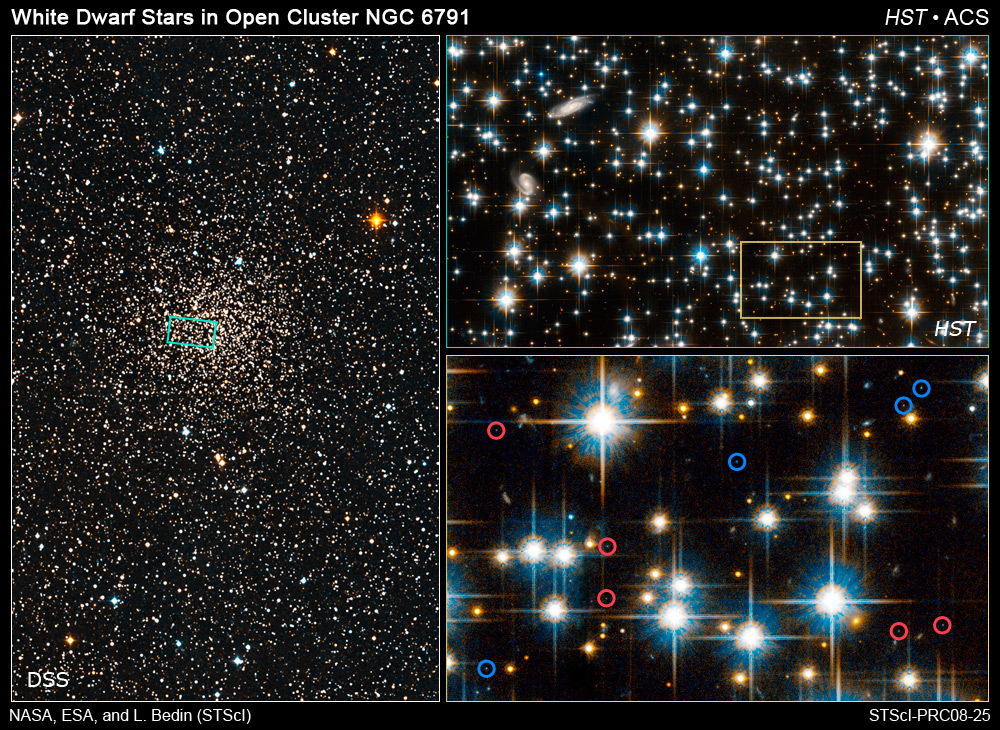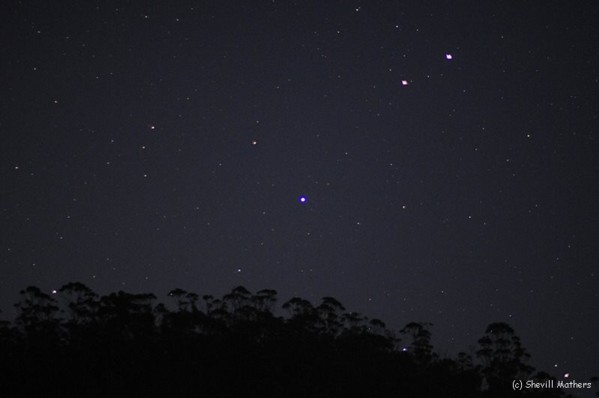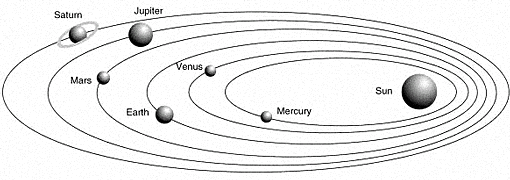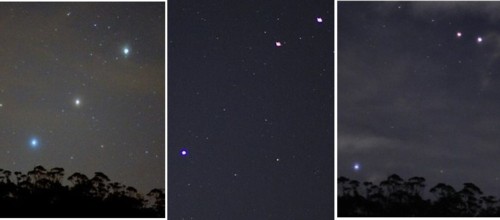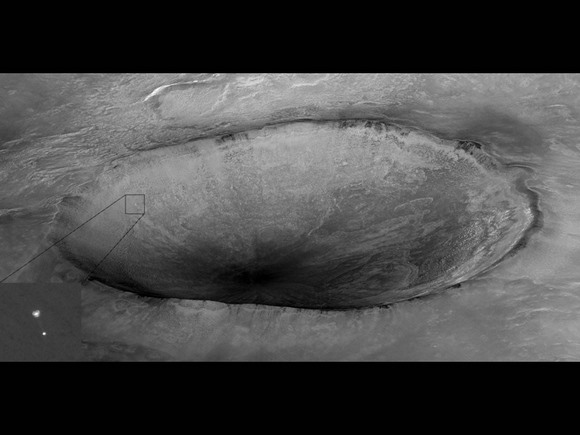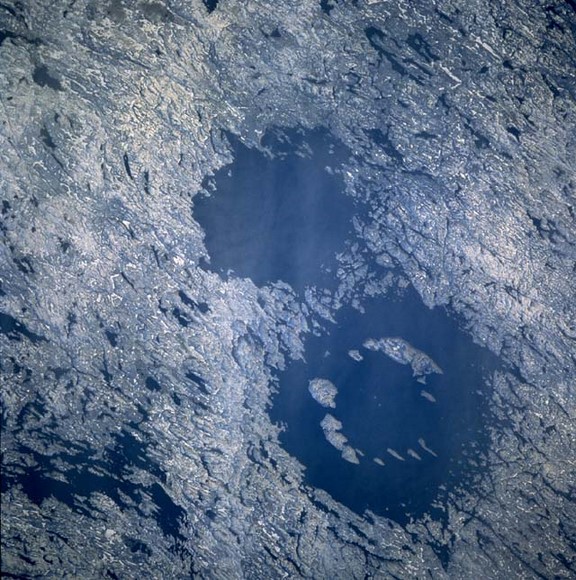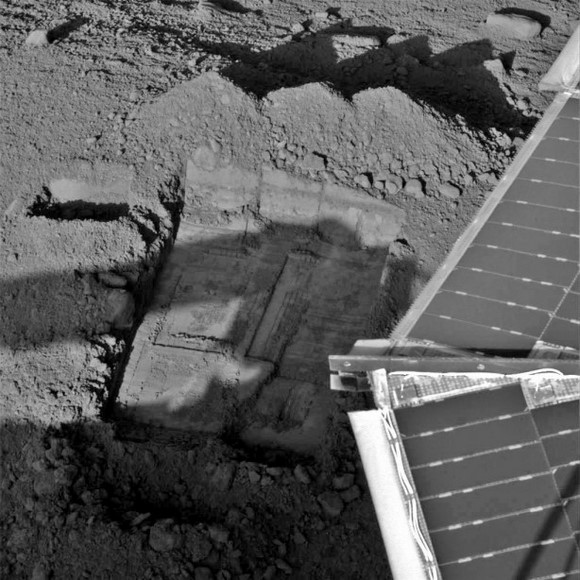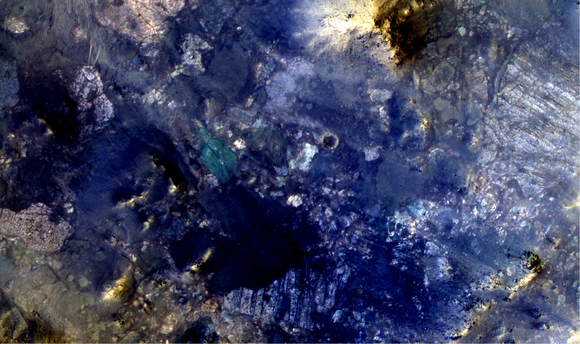Ever have one of those moments when you can’t remember how old you are? A group of astronomers may have felt they were having a “senior moment” when they couldn’t seem to figure out exactly the age of stars in the open star cluster NGC 6791, located in the constellation Lyra. Conventional thinking among astronomers is that stars in open clusters form at the same time, but in this particular cluster, researchers found stars at three different ages: one group of white dwarf stars appeared to be 4 billion years old, a second group of white dwarfs seemed to 6 billion years old, while the other regular stars were calculated to be 8 billion years of age. The astronomers say this dilemma may fundamentally challenge the way astronomers estimate cluster ages. Ivan King of the University of Washington and leader of the group using the Hubble Space Telescope to study this star cluster said: “This finding means that there is something about white dwarf evolution that we don’t understand.”
I just love it when astronomers say something like that, because it means they’ll return to their telescopes and the data in order to figure out the dilemma, and we’ll learn something new. And that’s just what they did. At least, partially.
“The age discrepancy is a problem because stars in an open cluster should be the same age. They form at the same time within a large cloud of interstellar dust and gas. So we were really puzzled about what was going on,” explained astronomer Luigi Bedin, who works at the Space Telescope Science Institute in Baltimore, Md.
After extensive analysis, members of the research team realized how the two groups of white dwarfs can look different and yet have the same age. It is possible that the younger- looking group consists of the same type of stars, but the stars are paired off in binary-star systems, where two stars orbit each other. Because of the cluster’s great distance, astronomers see the paired stars as a brighter single star.
Their brightness made them look younger.
Binary systems are also a significant fraction of the normal stellar population in NGC 6791, which contains over 10,000 stars, and are also observed in many other clusters. However, this would be the first time they have been found in a white-dwarf population.
“Our demonstration that binaries are the cause of the anomaly is an elegant resolution of a seemingly inexplicable enigma,” said team member Giampaolo Piotto the University of Padova in Italy.
Bedin and his colleagues are relieved that they now have only two ages to reconcile: an 8- billion-year age of the normal stellar population and a 6-billion-year age for the white dwarfs. All they need now is a process that slows down white-dwarf evolution.
Hubble’s Advanced Camera for Surveys analyzed the cooling rate of the entire population of white dwarfs in NGC 6791, from brightest to dimmest. White dwarfs are the smoldering embers of Sun-like stars that no longer generate nuclear energy and have burned out. Their hot remaining cores radiate heat for billions of years as they slowly fade into darkness. Astronomers have used white dwarfs as a reliable measure of the ages of star clusters, because they are the relics of the first cluster stars that exhausted their nuclear fuel.
White dwarfs have long been considered dependable because they cool down at a predictable rate. The older the dwarf, the cooler it is, making it a seemingly perfect clock that has been ticking for almost as long as the cluster has existed.
All right, astronomers, back to your telescopes to get this all figured out! And when they do, the rest of you can read about it on Universe Today. In the meantime, enjoy the lovely images above of star cluster NGC 6791.
News Source: Hubble press release

